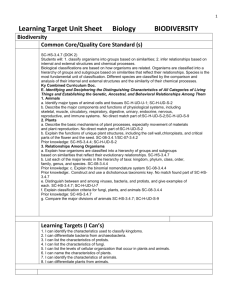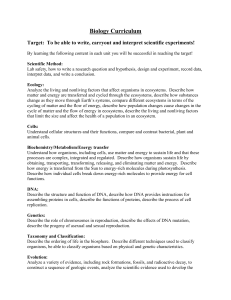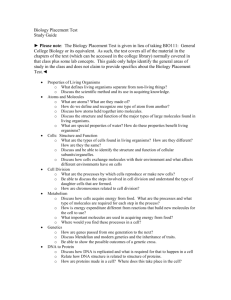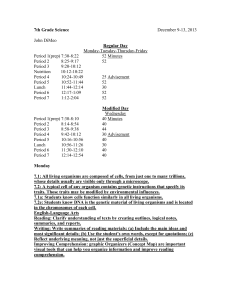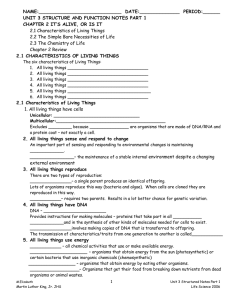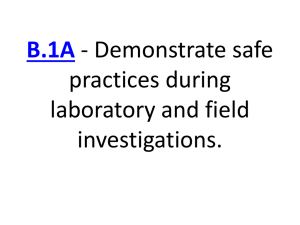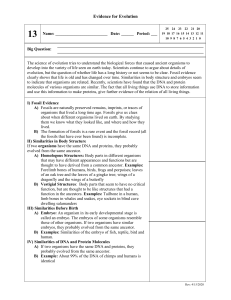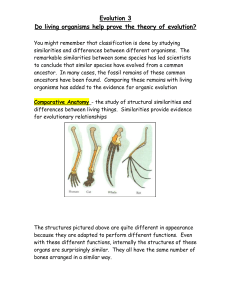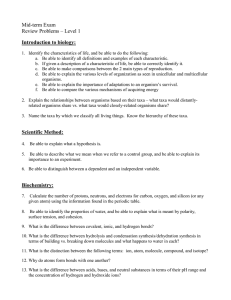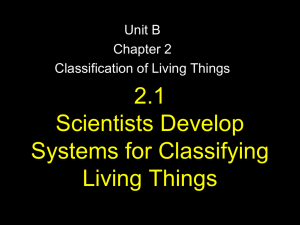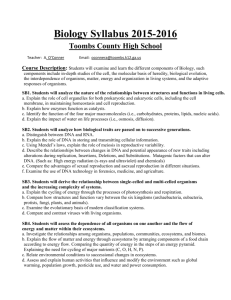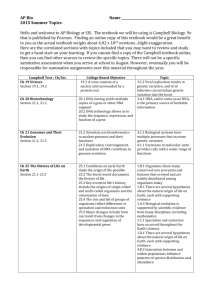Adair County Common Core Science Standards
advertisement
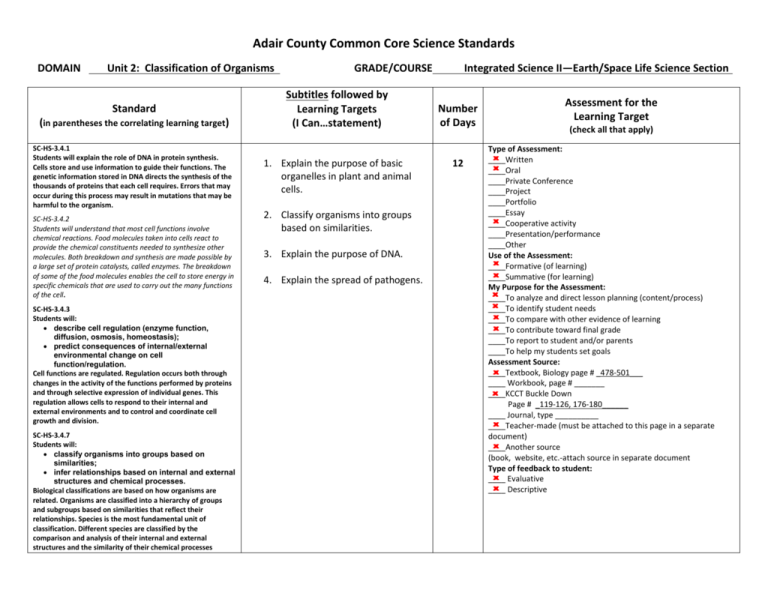
Adair County Common Core Science Standards DOMAIN Unit 2: Classification of Organisms Standard (in parentheses the correlating learning target) SC-HS-3.4.1 Students will explain the role of DNA in protein synthesis. Cells store and use information to guide their functions. The genetic information stored in DNA directs the synthesis of the thousands of proteins that each cell requires. Errors that may occur during this process may result in mutations that may be harmful to the organism. SC-HS-3.4.2 Students will understand that most cell functions involve chemical reactions. Food molecules taken into cells react to provide the chemical constituents needed to synthesize other molecules. Both breakdown and synthesis are made possible by a large set of protein catalysts, called enzymes. The breakdown of some of the food molecules enables the cell to store energy in specific chemicals that are used to carry out the many functions of the cell. SC-HS-3.4.3 Students will: describe cell regulation (enzyme function, diffusion, osmosis, homeostasis); predict consequences of internal/external environmental change on cell function/regulation. Cell functions are regulated. Regulation occurs both through changes in the activity of the functions performed by proteins and through selective expression of individual genes. This regulation allows cells to respond to their internal and external environments and to control and coordinate cell growth and division. SC-HS-3.4.7 Students will: classify organisms into groups based on similarities; infer relationships based on internal and external structures and chemical processes. Biological classifications are based on how organisms are related. Organisms are classified into a hierarchy of groups and subgroups based on similarities that reflect their relationships. Species is the most fundamental unit of classification. Different species are classified by the comparison and analysis of their internal and external structures and the similarity of their chemical processes GRADE/COURSE Subtitles followed by Learning Targets (I Can…statement) 1. Explain the purpose of basic organelles in plant and animal cells. 2. Classify organisms into groups based on similarities. 3. Explain the purpose of DNA. 4. Explain the spread of pathogens. Integrated Science II—Earth/Space Life Science Section Number of Days 12 Assessment for the Learning Target (check all that apply) Type of Assessment: ____Written ____Oral ____Private Conference ____Project ____Portfolio ____Essay ____Cooperative activity ____Presentation/performance ____Other Use of the Assessment: ____Formative (of learning) ____Summative (for learning) My Purpose for the Assessment: ____To analyze and direct lesson planning (content/process) ____To identify student needs ____To compare with other evidence of learning ____To contribute toward final grade ____To report to student and/or parents ____To help my students set goals Assessment Source: ____Textbook, Biology page # _478-501___ ____ Workbook, page # _______ ____KCCT Buckle Down Page # _119-126, 176-180______ ____ Journal, type __________ ____Teacher-made (must be attached to this page in a separate document) ____Another source (book, website, etc.-attach source in separate document Type of feedback to student: ____ Evaluative ____ Descriptive

